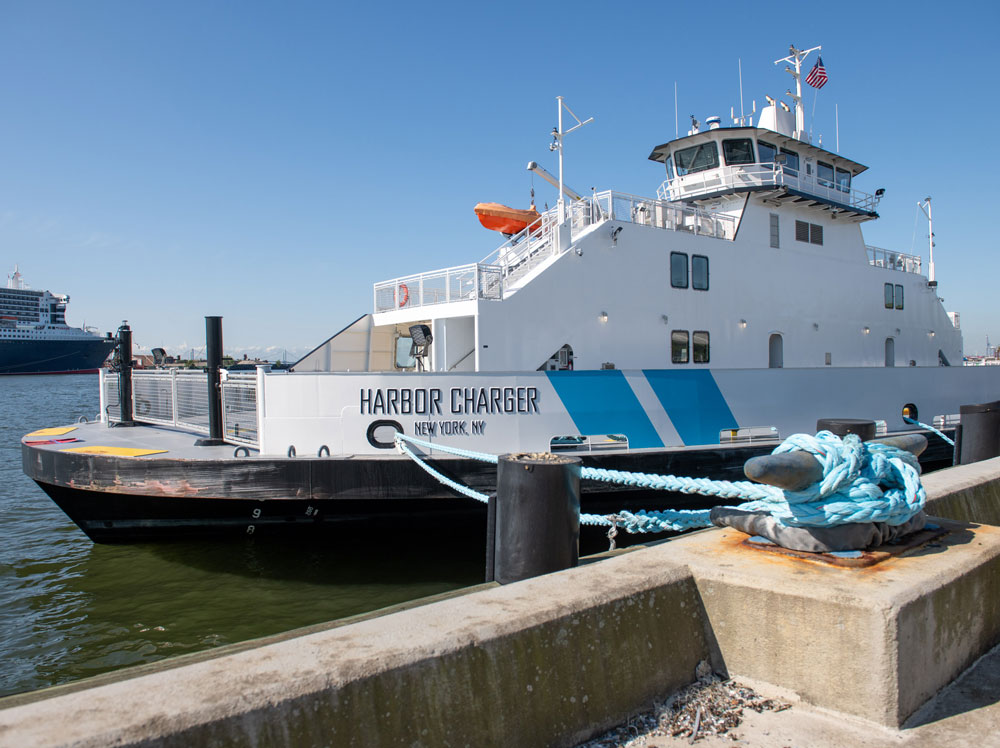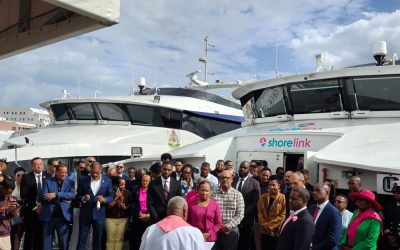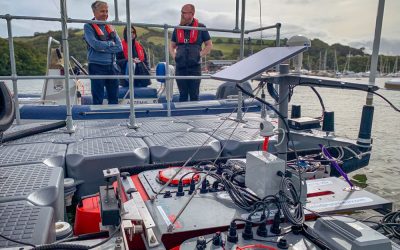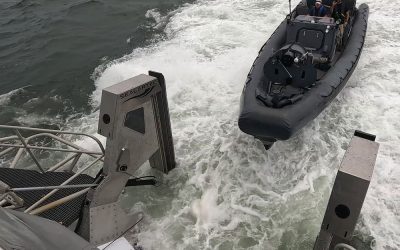New York State is about to breathe a tad easier, following the launch of the appropriately named public ferry Harbor Charger – a 58m-long, double-ended, hybrid diesel-electric ro-pax with the capacity for up to approximately 1,200 passengers.
Ordered for a reported US$33 million, the vessel was built domestically by Conrad Shipyard and delivered to NYC-based non-profit the Trust for Governors Island (TGI), which has deployed the ferry on a route between the Battery Maritime Building in Manhattan and Governors Island – the latter a former base for the US Army and US Coast Guard, and now a public park managed by TGI, offering tourists views of the Manhattan skyline and activities ranging from biking and glamping to jazz lawn parties. Harbor Charger replaces TGI’s diesel-powered ferry Lt. Samuel S. Coursen, which has been active in Manhattan since it first hit the water in 1956.
The new ferry was designed by Seattle-based naval architecture firm Elliott Bay Design Group (EBDG), constituting EBDG’s first battery-hybrid electric ferry concept to have made it to the delivery stage. David Turner, EBDG project manager, tells The Naval Architect: “Harbor Charger is a new design from the keel up. The only aspect required to match Lt. Samuel S. Coursen is the geometry of the ends, which is necessary for terminal compatibility.”
It became clear, however, from the earliest phases of the design process, that allocation of space on board Harbor Charger was going to be a challenge. Take the vessel’s hybrid-electric set-up, which includes: Siemens Energy’s BlueDrive Eco hybrid propulsion system; two energy storage spaces (ESS), or battery rooms, each housing approximately 435kWh of Siemens BlueVault batteries; and two CAT C18 gensets. The powertrain is topped off by a pair of Schottel SRP 210 azimuthing thrusters, enabling 360° steering, and the ferry boasts sufficient tankage for approximately 24,225litres of diesel fuel. Related to space allocation was cable routing – Harbor Charger relies on 23,000kg of internal cabling – which merited “a more front-loaded effort than has been necessary in the past”, as well as the prudent use of 3D ship modelling software, Turner adds.
To enable recharging, TGI, supported by US$7.5 million of funding from the US Federal Transit Administration, plans to install shoreside charging facilities at Soissons Landing on Governors Island. Once installed, shoreside charging will permit Harbor Charger to run on battery power all day, taking on a rapid recharge each time the vessel docks on Governors Island. TGI forecasts that the vessel operating in battery-assisted hybrid mode could reduce CO2 emissions by nearly 600tonnes annually.
Turner continues: “The generators on board allow the vessel to operate in a hybrid mode until the shore charging is installed. The generators, which were also used for the delivery trip, will be used for periodic travel to shipyards, and are available in the case of shoreside power loss.” Harbor Charger’s resultant cruising speed is 12knots – reportedly making this vessel 66% faster than TGI’s current ferries, on average.
The ferry has been built in steel, and features a full displacement hull divided into seven watertight compartments, with the engine room located amidships. “Crew can move securely from the engine room to the pilothouse, while passengers have two lounges, each with a WC, along with outdoor viewing areas on both the main and first decks,” says Turner.
TECHNICAL PARTICULARS: Harbor Charger
Length: 58m / Breadth: 19m (approx.) / Depth: 4m / Design draught: 2.59m / Main engines: 2 x CAT 18 / Propulsion: 2 x Schottel SRP 210 / Battery packs: 2 x Siemens BlueVault, 435kW each / Passengers: 1,200 (approx.), 600 with 30 vehicles / Crew: 5-8, depending on number of passengers / Service speed: 12knots
For the full article, check out the October 2025 issue of The Naval Architect




